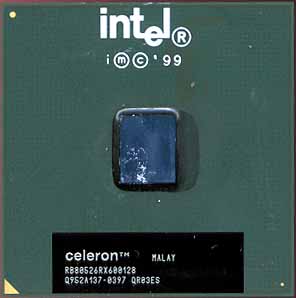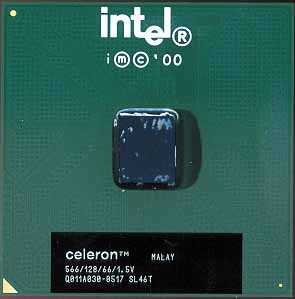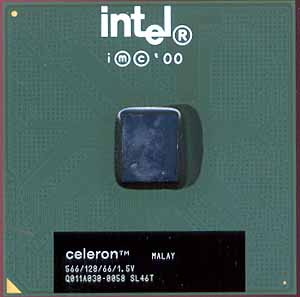
The Candidates
We had a total of three processors for our overclocking tests: the original OEM Celeron 600 that we used for our Celeron 600 review and two OEM Celeron 566s.



We used a default Intel heatsink/fan combo, which is what Intel ships with all boxed Celeron processors as well as all boxed FC-PGA Pentium III processors. The heatsink/fan combo isn’t the most powerful unit, but it gets the job done and does so without tacking on an additional $40 to the cost of the setup, so we were fine with using it.


The first test was a bit disappointing. As we mentioned in our original Celeron 600 article, our 600MHz part would not hit 900MHz (100MHz x 9.0). In fact, the highest our 600MHz Celeron would reach was 750MHz, made possible using the 83MHz FSB. This was at the default voltage of 1.50v, although, in order for the system to remain just as stable as it was at 600MHz, we had to bump the core voltage up to 1.55v.
Luckily, our Celeron 566s seemed to appreciate being overclocked much more than our first 600. Both processors ran just fine at 850MHz (100MHz x 8.5) at a 1.65v core voltage setting. While this may seem a bit high, you have to keep in mind that the Pentium III 850 uses a 1.65v core voltage so this setting wasn’t exactly out of spec.
By increasing the FSB to 112MHz, we managed to get both processors to hit 952MHz, which was the highest they’d go. At 952MHz, we were clearly pushing the limits of the yield on those particular chips as we had to increase the core voltage to 1.70v to complete the performance tests and 1.75v in order to complete our stability tests over a 48 hour period.










0 Comments
View All Comments